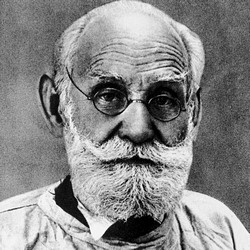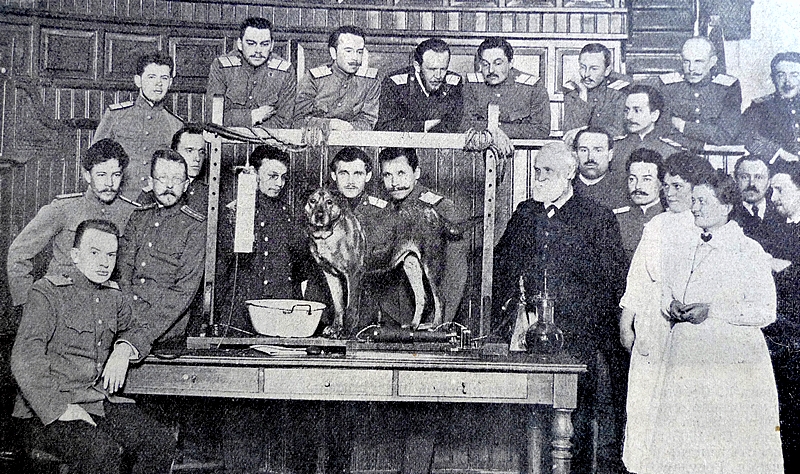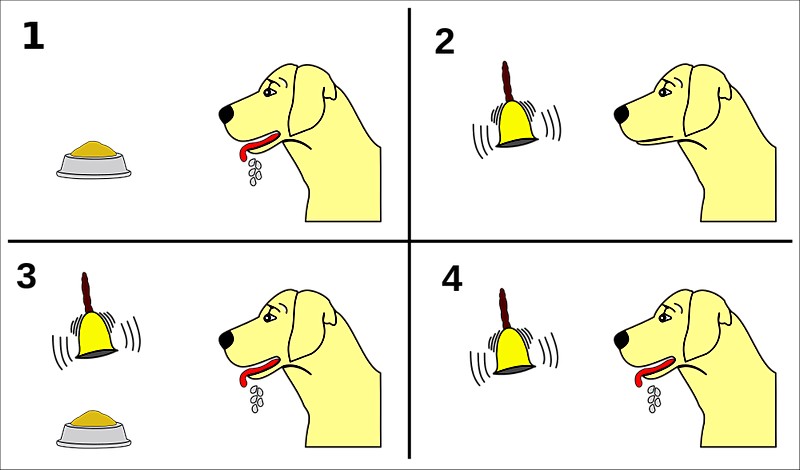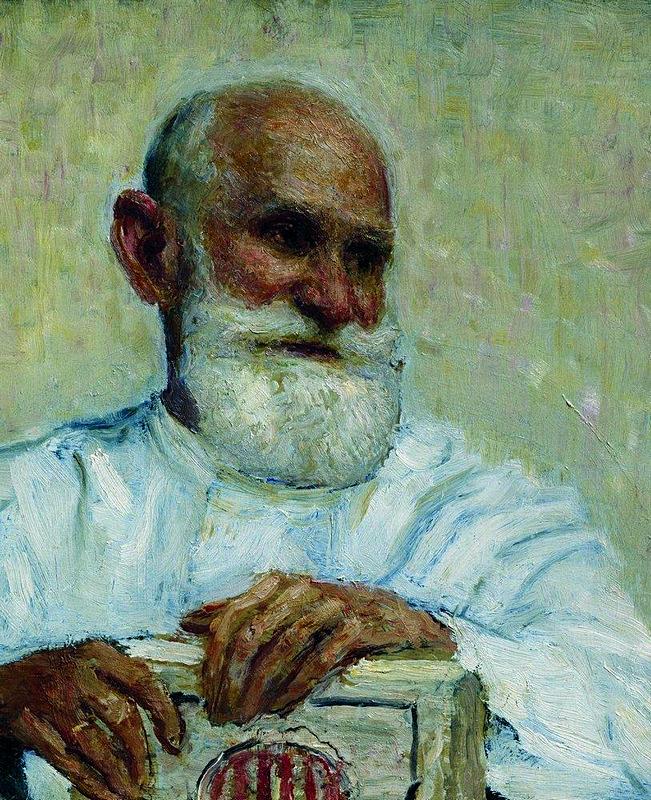Ivan Pavlov

Born: Ryazan - 26 September 1849
Died: Leningrad - 27 February 1936
Ivan Pavlov was the first Russian Nobel laureate, winning the Prize for Physiology or Medicine in 1904. His scientific research on the digestive system and other involuntary reflex actions brought him international fame and was hugely influential not only in physiology, but also in the nascent field of comparative psychology, and even in popular culture - Pavlov's experiments with conditional reflexes in dogs are as iconic as Newton's apple or Archimedes' bath.
Ivan Petrovich Pavlov was born in 1849 in Ryazan in central Russia. He was the oldest of eleven children, and his father was a village priest. Pavlov suffered a serious fall at the age of seven that prevented him from starting formal schooling for several years, but he went on to the local seminary and was destined to follow his father into the priesthood. In 1870, however, he had a change of heart and decided to enter the Imperial University in St. Petersburg to study the natural sciences. In his fourth year, his first major research project, on the physiology of the nerves of the pancreas, won a major prize, and the following year he completed his course, becoming a Candidate of Natural Sciences.

For the next decade, Pavlov studied and worked at a variety of St. Petersburg institutions, including the Academy of Medical Surgery, the Veterinary Institute and the Medical Military Academy. He was also employed at the Physiological Laboratory of the renowned clinician Sergey Botkin. His research at the time concentrated on the trophic function of the nervous system and the regulation of reflexes in the circulatory organs.
After completing his doctorate in 1883, Pavlov went for two years to Germany to study with Carl Ludwig in Leipzig. Here he began his experiments on the digestive systems of dogs. On returning to St. Petersburg, he spent several years looking for a permanent university post, before eventually being appointed Professor of Pharmacology at the Military Medical Academy. The following year he was invited to organize and run the Department of Physiology at the Institute of Experimental Medicine. He would spend 45 years in the position, while continuing to teach at the Military Medical Academy (he transferred to the chair of physiology in 1895). Pavlov helped to make the Institute of Experimental Medicine one of the world's leading centres of physiological research, and it was here that he performed his renowned experiments on the salivary functions of dogs.

He published The Work of the Digestive Glands in 1897, and in 1901 he was nominated for the Nobel Prize for the first time. It took four attempts before he was eventually given the award in 1904. Meanwhile he continued his investigations into the gastric functions of dogs and children, and went on to research involuntary reflex reactions to stress and pain, developing the concept of transmarginal inhibition to describe the way the body shuts down when exposed to overwhelming pain and stress. Pavlov's work was particularly influential on the American psychologist John B. Watson, who established the school of behaviorism, and also found an ardent support in the British philosopher Bertrand Russell, who saw Pavlov's work as fundamental to understanding the philosophy of mind.
Pavlov remained in Russia after the Bolshevik Revolution, and was highly valued by the new government. But although he was well provided for by the state and allowed to continue his research freely, he was a strident critic of the new regime, publicly protesting Stalin's increasingly authoritarian policies, and actively defending those of his acquaintance who were caught up in the state's persecution.

Pavlov married Seraphima Vasilievna Karchevskaya in 1881, and the couple had four children that survived to adulthood. Pavlov died of double pneumonia at the age of 86 in 1936. True to his lifelong spirit of inquiry, he asked one of his students to record all the circumstances of his death to establish evidence of the subjective experience of dying.
The street on Aptekarskiy Island where the Institute of Experimental Medicine stands was renamed Ulitsa Akademika Pavlova (Academic Pavlov's Street), and in the courtyard of the Institute there is sculpture of one of Pavlov's dogs commemorating his experiments. Pavlov's name was also given to the Academy of Sciences Institute of Physiology, the building of which on Vasilievskiy Island also houses the I. P. Pavlov Memorial Museum Apartment.

